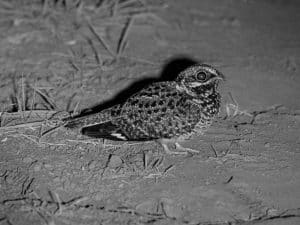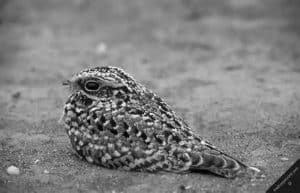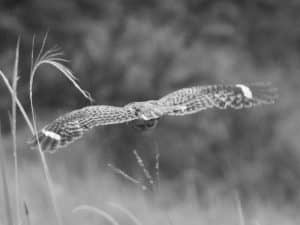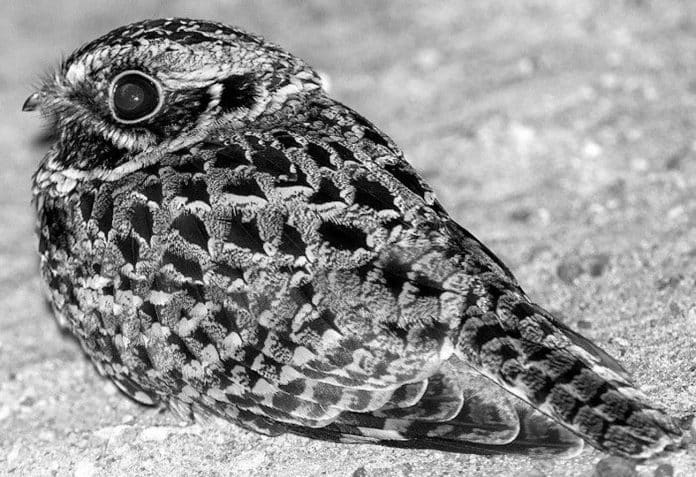Introduction to the Swamp Nightjar
The Swamp Nightjar, also known by its scientific name Caprimulgus natalensis, is a fascinating bird species that can be found in the wetland habitats of Tanzania. With its unique physical characteristics and behavior, the Swamp Nightjar in Tanzania has adapted to its nocturnal lifestyle in the marshes and swamps of this East African country. In this article, we will take a closer look at the Swamp Nightjar, exploring its habitat, distribution, nocturnal adaptations, vocalizations, feeding habits, and conservation status. We will also provide tips for spotting this elusive bird in Tanzania’s wetland areas, as well as shed light on other species that share its nighttime habitat.
Habitat and Distribution of the Swamp Nightjar in Tanzania

The Swamp Nightjar is primarily found in the wetland habitats of Tanzania, including marshes, swamps, and floodplains. These areas provide the bird with abundant food sources and suitable nesting sites. The bird’s distribution extends across various regions of Tanzania, including the Serengeti, Selous, and Ruaha National Parks. It can also be found in the wetland areas surrounding Lake Victoria and Lake Tanganyika.
The Swamp Nightjar prefers habitats with dense vegetation, such as papyrus reeds and tall grasses, which provide excellent camouflage during the day. These wetland areas also attract a variety of insects, which serve as the primary food source for the Swamp Nightjar. The bird’s ability to blend into its surroundings and its specialized hunting techniques make it a master of its wetland environment.
Physical Characteristics and Behavior of the Swamp Nightjar
The Swamp Nightjar is a medium-sized bird with a length of approximately 25 centimeters and a wingspan of around 60 centimeters. It has a cryptic plumage that is predominantly brown and mottled, allowing it to blend seamlessly into the marshy vegetation. The bird’s large eyes are adapted for low-light conditions, providing it with excellent night vision.
During the day, the Swamp Nightjar roosts on the ground, relying on its camouflage to remain hidden from predators. It is a solitary bird, typically found in pairs only during the breeding season. As dusk approaches, the Swamp Nightjar becomes active, emerging from its daytime roost to hunt for insects. Its flight is characterized by a silent and buoyant gliding motion, thanks to its long and pointed wings.
Nocturnal Adaptations of the Swamp Nightjar
The Swamp Nightjar has several adaptations that enable it to thrive in its nocturnal lifestyle. One of its most notable adaptations is its large eyes, which are highly sensitive to dim light. This allows the bird to navigate and hunt in low-light conditions with exceptional precision. Additionally, the Swamp Nightjar has specialized feathers on its wings that aid in silent flight, allowing it to approach unsuspecting prey without detection.
Another adaptation of the Swamp Nightjar is its wide gape and large mouth, which enable it to catch insects in flight. While flying, the bird opens its mouth wide and extends its long, slender tongue to snatch flying insects, such as moths and beetles, right out of the air. This unique hunting technique makes the Swamp Nightjar a formidable predator in the wetland habitats of Tanzania.
Vocalizations and Courtship Displays of the Swamp Nightjar

The Swamp Nightjar is known for its distinctive vocalizations, which are most commonly heard during the breeding season. The male Swamp Nightjar produces a repetitive churring call, resembling the sound of a spinning reel. This vocalization serves as both a territorial display and a means of attracting females. The male will perch on a prominent branch or stump and repeatedly emit its churring call to establish its presence and defend its territory.
During courtship displays, the male Swamp Nightjar performs an elaborate aerial dance to impress the female. This display involves a series of acrobatic flight maneuvers, including spirals, dives, and sudden changes in direction. The male will also fan its tail feathers and produce distinctive wing-clapping sounds as part of its courtship ritual. These displays not only showcase the male’s physical prowess but also serve as a way to communicate its fitness and genetic quality to potential mates.
Feeding Habits and Diet of the Swamp Nightjar
As a primarily insectivorous species, the Swamp Nightjar relies on a diet of flying insects to sustain itself. Its preferred prey includes moths, beetles, dragonflies, and other insects that are abundant in its wetland habitat. The bird hunts for insects on the wing, using its exceptional flight skills and specialized feeding adaptations.
When hunting, the Swamp Nightjar employs a sit-and-wait strategy. It perches on a low branch or on the ground, patiently observing its surroundings for signs of insect activity. Once it spots its prey, the bird will launch itself into the air and catch the insect in its wide gape. It then returns to its perch to consume the captured insect, using its bristle-like feathers around its mouth to filter out any indigestible parts.
Threats and Conservation Status of the Swamp Nightjar
The Swamp Nightjar faces several threats to its survival in Tanzania’s wetland habitats. Habitat loss due to human activities, such as agriculture and urbanization, is a significant threat to this species. Wetland degradation, including drainage and pollution, also poses a risk to the bird’s habitat and food sources. Additionally, the use of pesticides in agricultural practices can indirectly impact the Swamp Nightjar by reducing its prey population.
Due to these threats, the Swamp Nightjar is listed as Near Threatened on the International Union for Conservation of Nature (IUCN) Red List of Threatened Species. Efforts are being made to protect and conserve the wetland habitats where the Swamp Nightjar resides. These include the establishment of protected areas, habitat restoration projects, and community education programs aimed at raising awareness about the importance of wetland conservation.
Tips for Spotting the Swamp Nightjar in Tanzania

Spotting the elusive Swamp Nightjar in Tanzania’s wetland habitats can be a challenging but rewarding experience. Here are a few tips to increase your chances of encountering this remarkable bird:
- Visit wetland areas at dusk or dawn: The Swamp Nightjar is most active during twilight hours, so plan your visits accordingly. Choose locations with suitable wetland habitats, such as marshes, swamps, and floodplains.
- Look for roosting sites: During the day, the Swamp Nightjar roosts on the ground, blending in with its surroundings. Look for well-camouflaged birds on the forest floor or among tall grasses.
- Listen for vocalizations: The churring call of the male Swamp Nightjar is distinctive and can help you locate their presence. Familiarize yourself with the bird’s vocalizations before your trip to better identify their calls.
- Be patient and observant: The Swamp Nightjar is a master of camouflage, so patience and keen observation skills are essential. Scan the wetland areas carefully, looking for any movement or signs of the bird’s presence.
Other Nightlife Species in Wetland Habitats of Tanzania
Tanzania’s wetland habitats are home to a diverse array of nocturnal species, besides the Swamp Nightjar. These include various bird species, such as owls, herons, and rails, which have also adapted to the challenges of hunting and surviving in low-light conditions. Mammals like hippos, crocodiles, and bats are also common inhabitants of wetland areas, each playing a unique role in the ecosystem.
Exploring the wetland habitats of Tanzania after dark can provide a glimpse into the hidden world of these fascinating creatures. From the haunting calls of nocturnal birds to the stealthy movements of mammals, the night in Tanzania’s wetlands is a symphony of life waiting to be discovered.
Conclusion: Appreciating the Beauty of the Swamp Nightjar in Tanzania
The Swamp Nightjar is a remarkable bird species that has adapted perfectly to its wetland habitat in Tanzania. Its unique physical characteristics, nocturnal adaptations, and courtship displays make it a fascinating subject of study for bird enthusiasts and researchers alike. However, the Swamp Nightjar is also facing threats to its survival, highlighting the importance of wetland conservation efforts.
By appreciating the beauty of the Swamp Nightjar and understanding its ecological significance, we can contribute to the conservation of this remarkable bird and its wetland habitat. So next time you find yourself in Tanzania’s wetlands, keep an eye out for the Swamp Nightjar and other nocturnal species that call this diverse ecosystem home. Let us protect and cherish these wetland habitats, ensuring that future generations can also catch a glimpse into the vibrant nightlife of Tanzania’s wetlands.


































